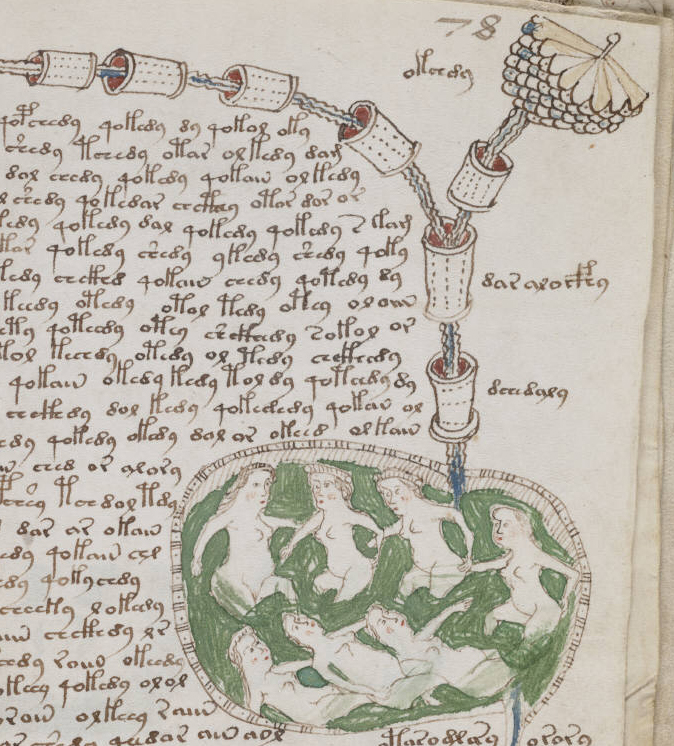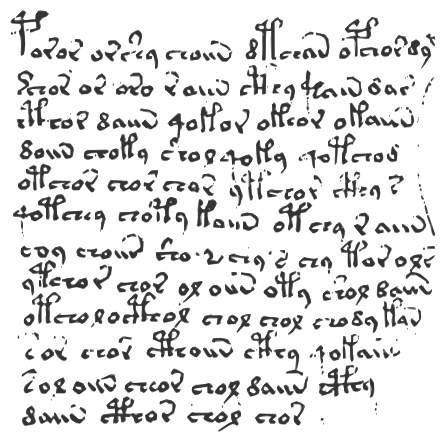The Voynich manuscript, described as “the world’s most mysterious manuscript”, is a work which dates to the early 15th century (1404–1438), possibly from northern Italy. It is named after the book dealer Wilfrid Voynich, who purchased it in 1912.
Some pages are missing, but there are now about 240 vellum pages, most with illustrations. Much of the manuscript resembles herbal manuscripts of the 1500s, seeming to present illustrations and information about plants and their possible uses for medical purposes. However, most of the plants do not match known species, and the manuscript’s script and language remain unknown. Possibly some form of ciphertext, the Voynich manuscript has been studied by many professional and amateur cryptographers, including American and British codebreakers from both World War I and World War II. It has defied all decipherment attempts, becoming a famous case of historical cryptology. The mystery surrounding it has excited the popular imagination, making the manuscript a subject of both fanciful theories and novels. None of the many speculative solutions proposed over the last hundred years has yet been independently verified (source).
Theories regarding the authorship, origin, and purpose of the manuscript abound. Some believe that the author was Roger Bacon, the thirteenth-century English philosopher who was reputed to be a magician who discovered an Elixir of Life. Several other possible authors have been theorized but never proven, and some even suspect that Voynich himself fabricated the manuscript. Many feel that the fact that the book has never been decrypted is a strong argument for it being an elaborate hoax, but, given the time, money, and knowledge required to create it, the hoax theory seems unlikely. Indeed, based on a 1666 letter that accompanied the manuscript, the book once belonged to Emperor Rudolf II (1552–1612) who paid 600 gold ducats (approximately USD $80,000 in 2011) for it.
The purpose of the manuscript is also elusive. Based on its obscure illustrations, some think it was meant to be a pharmacopoeia to address topics in medieval or early modern medicine, some think it may have been some kind of textbook for an alchemist, and the fact that some of the diagrams seem to be astronomical and that the botanical drawings are unidentifiable “has even led some fanciful theorists to propose that the book may have an alien origin” (Wikipedia: Ibid.).
A new study, published in the journal Plos One, suggests the manuscript may, after all, hold a genuine message. According to the abstract of the study: “The Voynich manuscript has remained so far as a mystery for linguists and cryptologists. While the text written on medieval parchment -using an unknown script system- shows basic statistical patterns that bear resemblance to those from real languages, there are features that suggested to some researches that the manuscript was a forgery intended as a hoax. Here we analyze the long-range structure of the manuscript using methods from information theory. We show that the Voynich manuscript presents a complex organization in the distribution of words that is compatible with those found in real language sequences. We are also able to extract some of the most significant semantic word-networks in the text. These results together with some previously known statistical features of the Voynich manuscript, give support to the presence of a genuine message inside the book.”
“After discovering what he believed are significant word networks within the text, coauthor Marcelo Montemurro said it is unlikely someone looking to perpetrate a hoax would produce these features since the academic knowledge of these structures didn’t exist until recently. However, despite picking out suggestive patterns within the text, Montemurro said a meaning is still out of reach” (source).

.jpg)


.jpg)

